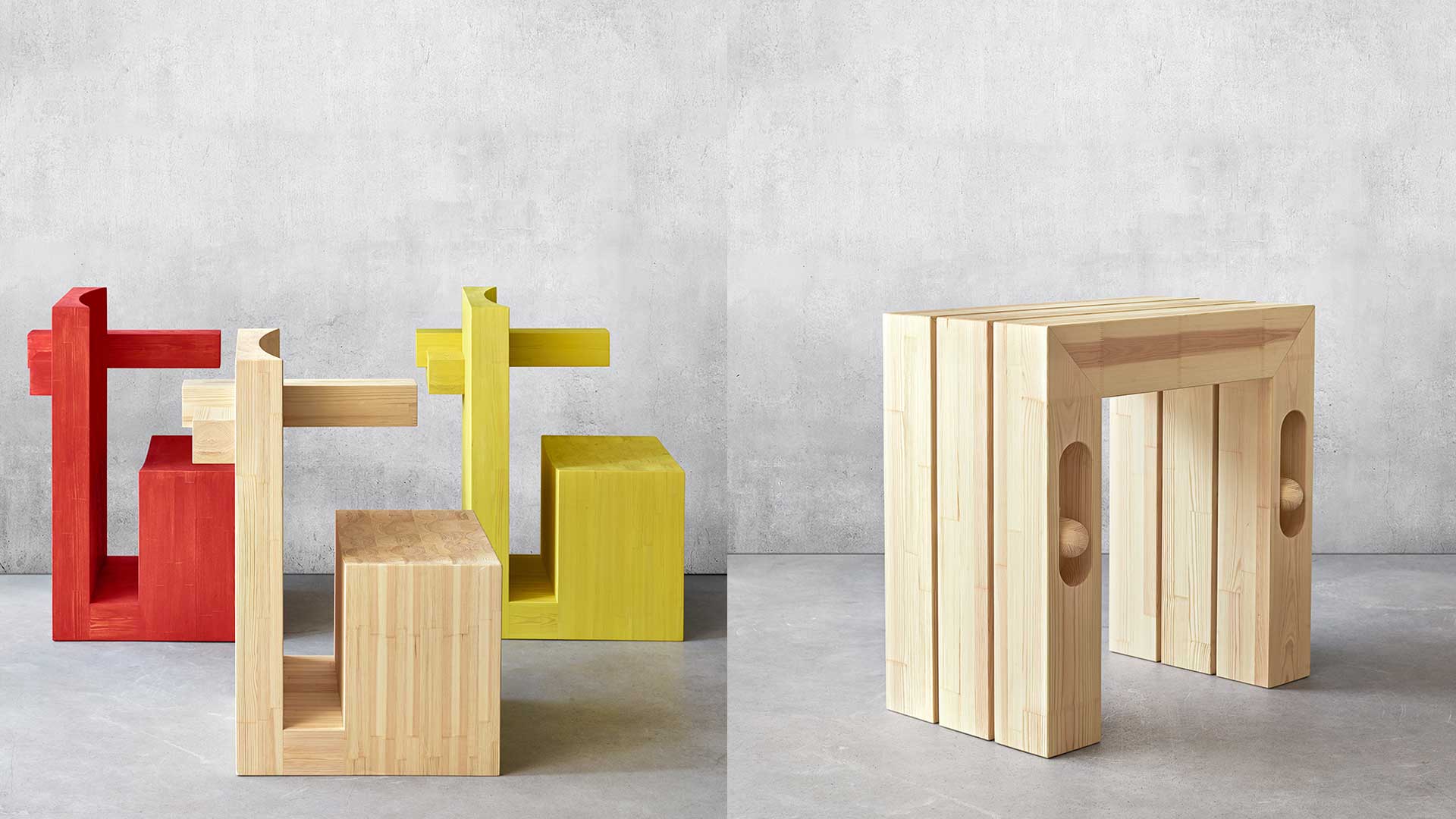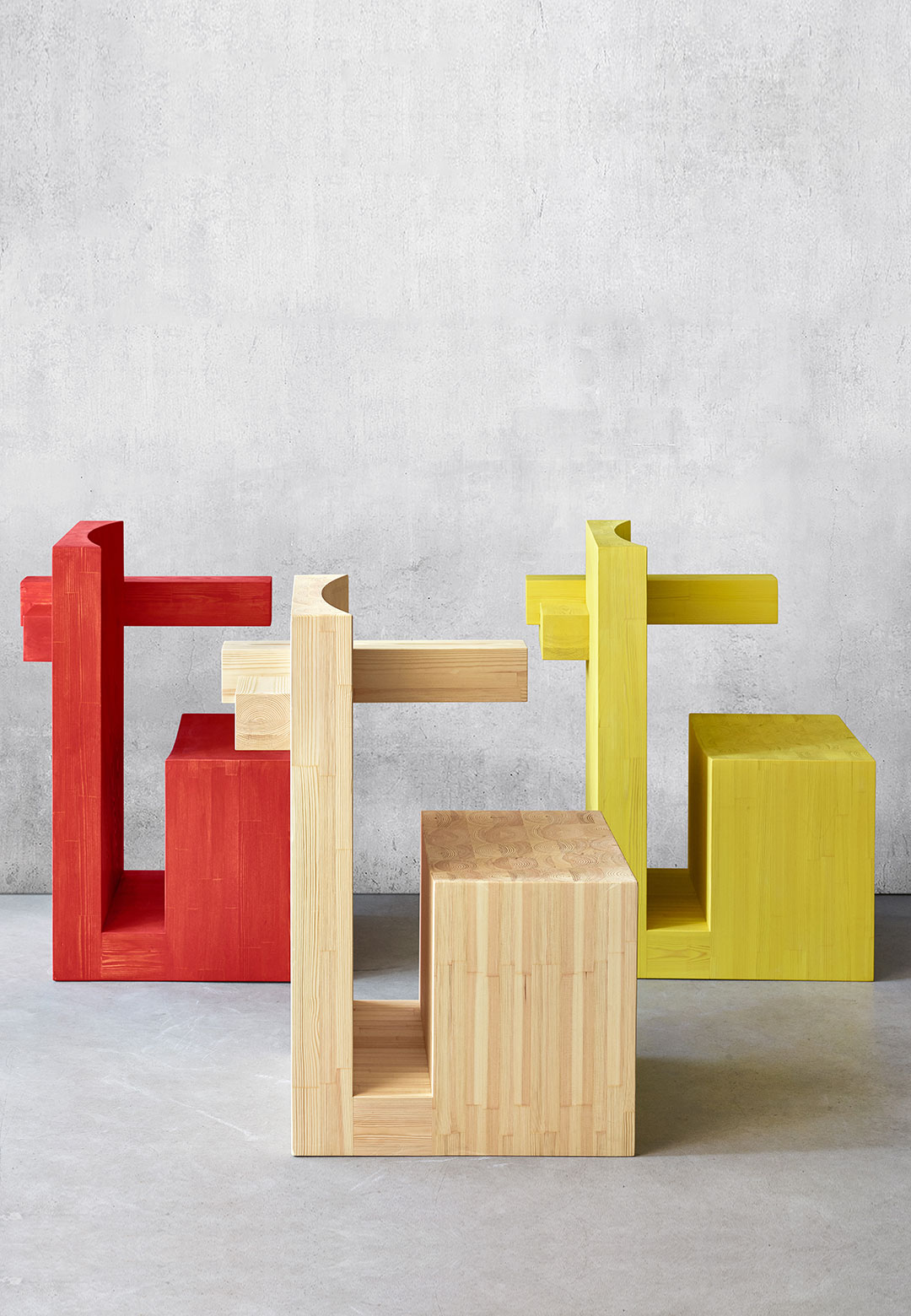Discarded styrofoam morphs into furniture, shoe soles on their way to landfills take a detour and become doorstops instead, and wood waste transitions into homeware—the practice of upcycling is lately making waves in the world of art and design. Although its name is relatively new, this practice of reinventing the obsolete has been deeply ingrained in cultural fabrics for ages. In the Indian context, for instance, countless saris have evolved into bags, old furniture has yielded wooden blocks for block printing and sal leaves have been woven into pattals or plates—evidence that sustainability has, for long, been an inherent cultural thought process. How are designers around the world interpreting this age-old approach with a new fancy name as it sweeps the creative realms?
In that vein, this ensemble of upcycled designs serves to give a new purpose to the leftover wood obtained during the manufacturing of stairs. Born from a collaboration between Swedish designer Alexander Lervik and Sweden-based brand Drömtrappor, the Hemvist collection is a limited edition series of furniture design encompassing an armchair, a small table, and a bench where the designer uses the same technique with tenons and wedges as in the manufacture of Hemvist stairs. The collection, unveiled during Stockholm Furniture Fair 2023, is presented at Lervik’s newly opened design gallery, Unikat. “The inspiration for the Hemvist collection comes from Scandinavian wooden furniture from the 40s and 50s where tenons and wedges are used in the construction of the furniture,” says Lervik. “I have immersed myself in various techniques for constructing wooden furniture and highlighted the idea of the details as a design element in my design,” he adds.
Over 600 kilometres north of Gävle, a village named Norsjö is home to Drömtrappor and is the birthplace of this partnership with Lervik. “I remember the first time I visited the factory, it was the only time in my 25 years in the furniture industry that I got goosebumps from seeing how the production is done. In front of me, furniture craftsmen worked with materials that mostly came from the forests outside the factory, it couldn’t be more sustainable,” recalls the furniture designer. Employee craftsmanship spoke of quality furniture managed over generations, kicking off the creation of the Hemvist staircase that Lervik created for Drömtrappor, a recent collaboration launched concurrently at the furniture fair. Taking cues from and extending on the brand’s legacy of craftsmanship, he contrived a staircase design that does not only deliver aesthetics and function but also epitomises a sense of warmth, comfort, and attention to detail, hence the name Hemvist (Swedish for abode).
The Hemvist staircase is not conceived as a conventional product design, rather, the construction is such that it becomes possible to easily replace the steps once they wear out—a singular feature that makes it stand out in the stair industry. The steps can be changed by loosening the wedges that attach them to the construction, a technique that makes an extended life inevitable. “I wanted to use these jointing techniques with 'tenons and wedges' to construct the staircase so that it will be a treasure that you save for generations,” explains Lervik. The same technique of mortise and tenon joints is replicated to produce the tables, benches, and chair designs of the furniture collection that showcases a graphic simplicity with a strong identity.
The aspect that contributes to the collection’s uniqueness also posed a significant challenge during the process of making. Instating a completely new idea of construction and rustling up the existing production system that has nearly been the same for years required conscious adaptation, akin to innovation in any sphere. “Innovating a production process is a lot about making the staff feel safe in the new stages that arise with the change,” the designer shares. In the chair, the joints can be seen on the side of the backrest, deftly supporting the armrests. In the table design, on the other hand, the peg is sunken in the blocky legs. The wooden furniture donned in vibrant hues of red, yellow, and black or its natural grain embodies sustainability on multiple levels. The construction unfolds sans screws or glue and the wood used is sourced from around the Drömtrappor's factory—or in the case of Hemvist furniture, from residual waste produced during the manufacturing of the stairs.
Lervik sculpts the Hemvist collection not just with the eye of a designer but also hones it through the lens of a user. Multiple facets come into play—sustainable design, circularity, functionality, economic accessibility, and comfort—all of which he strives to encapsulate in both the staircase and its offshoot furniture. Embracing craft and innovative design in its entirety Lervik achieves a design he would want in his home—an emotion he hopes the viewers would share.






 Sign in with email
Sign in with email










What do you think?